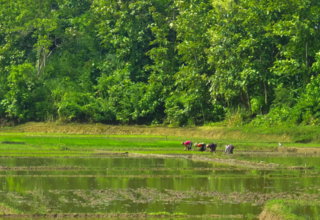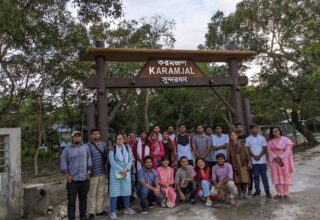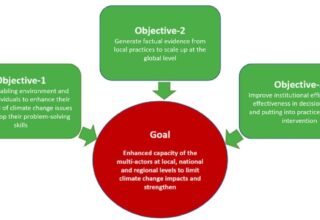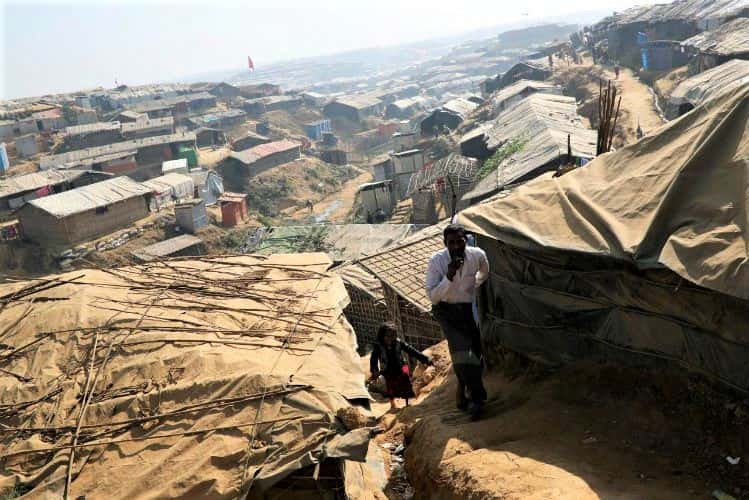
Moving towards a humanitarian-development response to the Rohingya refugee crisis
Giorgi Gigauri is the Chief of IOM-UN Migration Agency’s mission in Bangladesh. This interview has been edited for clarity.
What is IOM’s overall vision for on-going Rohingya crisis in Bangladesh?
Our overall vision is basically two-fold. The first is the humanitarian phase. So, before we speak of midterm, longer term returns, sustainability, etc. we have life saving, critical, emergency needs that have to be met right now. This is our number one priority.
And the second is of course the long term. And that’s to support the sustainable return of these refugees back to their homeland.
Obviously, the second vision is not just the IOM vision. It’s part of the wider UN vision, and the UN is here to support the government, not the other way around. The longer term vision of course requires many things to fall into place before it becomes possible. So while we are supporting the government and other players, our primary concern right now is the life saving, emergency needs. And the very complex emergency we are in right now.
What has led to the emerging paradigm that a humanitarian refugee crisis requires a development response?
Firstly, the humanitarian-development nexus is not really new. Academics and emergency practitioners have been talking about this for a while. What is new is that recently it has found its way into normative documents and has risen to the top of the agenda. The discourse around complex emergencies is changing, and we are beginning to see concrete action.
What do I mean by that? Let’s look at the 2030 Agenda for Sustainable Development. Under SDG10: Reduced Inequalities, it recognizes the positive contribution of migration. It also acknowledges the multidimensional reality of migration and crisis and displacement. It recognizes how mass displacement can send your development plan back decades, especially when you talk about large scale displacements, refugee flows and so on.
So when we talk about the humanitarian response and development approach, the two come together when you look at it from a 360 degree or holistic perspective. You can pick whatever term you like. What it actually means is that you start from the beginning, not just looking at the immediate needs but also consider transition and stabilization efforts and already start thinking about longer term development interventions.
If you want to visualize it graphically, if you draw a circle and inside the circle you have the refugees. A humanitarian focus looks inside the circle. A humanitarian-development focus looks inside the circle and around the circle; what is outside the fence, what is around the perimeter within which the circle exists. You see what I am saying. Basically, when you apply a development approach to a humanitarian situation, it means looking beyond the immediate needs and looking wider around. This is very relevant to energy, environment and host community related work.
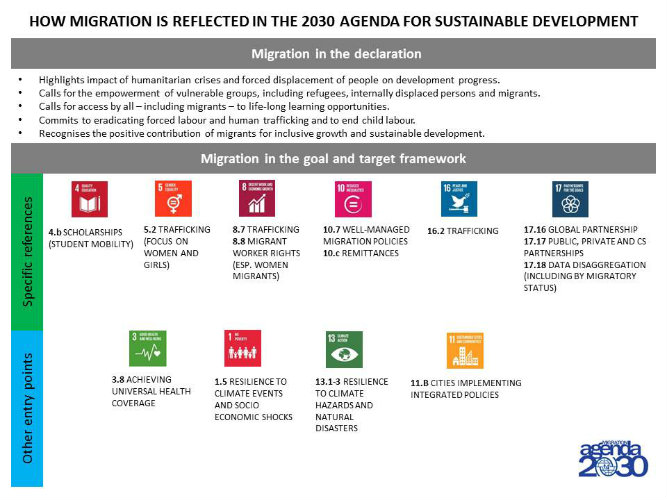
When does a humanitarian response end and a development response begin? What does this mean in the case of Bangladesh?
Conceptually and thematically, we are still trying to understand where a humanitarian response ends and midterm or stabilization or even longer term development begin. This is an academic debate. For example, is reforestation — is that a response, or is that stabilization or is that development? I could find you reasons to categorize that activity in all three. Or how about roads to refugee camps? You can define that activity as falling under immediate response, because it provides safe access to provide life saving critical needs. I can define it as midterm, because it provides a midterm solution for transportation. And certainly a long term development goal even after refugees leaves for the communities in Cox’s Bazar.
In many ways, a lot of things are being piloted in Bangladesh. I’ll give you a couple examples. The World Bank refugee window, the way it is being applied here is very new. This is unchartered territory. Providing humanitarian funding through infrastructure — how do we conceptualize that?
How do we integrate that in our humanitarian operations? Right now we are discussing with these giant players; these are titans in terms of funding of how they will coordinate with us even though the funding they are providing is more than we have. In a way, we should be coordinating with them. But this is humanitarian response so it is them that have to plug into the existent government-humanitarian response structure.
How do you plan development for a situation that is ultimately considered temporary or even “perpetually temporary”?
 Well, this is the billion dollar question. The first thing to recognize is that this discussion does not take place in a political vacuum. We are discussing it within strictly defined operational parameters, set by the government of Bangladesh. And those right now are very clear: nothing permanent, nothing longterm. Given these parameters, we are doing what we can to first and foremost to ensure the life saving services are in place, and beyond that looking to building the resilience of the people.
Well, this is the billion dollar question. The first thing to recognize is that this discussion does not take place in a political vacuum. We are discussing it within strictly defined operational parameters, set by the government of Bangladesh. And those right now are very clear: nothing permanent, nothing longterm. Given these parameters, we are doing what we can to first and foremost to ensure the life saving services are in place, and beyond that looking to building the resilience of the people.
So yes, it is midterm. But what is midterm? Like I said, there are a lot of activities you can define as humanitarian response and midterm. For example, shelter. Take bamboo shelter. It’s officially categorized as a midterm shelter strategy approved by the government. What’s the difference? There is still no cement, no concrete. But if you treat the bamboo, it becomes more resilient. On the face of it, it might even look the same to you. But by treating the bamboo, you are making it more resilient and long term: you’ve actually switched the shelter from emergency to a transitional shelter. That also buys you the commitment of local government and local community, because if they are getting an upgraded health facility, and free health services and medicine. We call it the New Way of Working, but again it is about the humanitarian-development nexus.
Conceptually and thematically, we are still trying to understand where a humanitarian response ends and midterm or stabilization or even longer term development begin.
How is the Rohingya refugee response different to other refugee crises around the world?
To me, a very important element of this crisis is that even though the government does not recognize the Rohingyas as refugees in line with the 1951 refugee convention, it is very important to emphasize that despite that, the Rohingya have received all the protections a refugee would receive without being labelled as refugees. And a step back from that, most importantly, the government has allowed them to come in and provided them with assistance and protection. In all but name, the government has been incredibly generous in making this happen.
Now compare this to the Mediterranean migration crisis, which is slightly different because there are mixed migration flows — you have refugees and migrants. Yes some countries like Germany are taking in a lot. But if you look at Europe as a whole, the discussion is all about controlling migration; it’s all about ensuring border control and ensuring return.
Here of course it is no different in that sense the Bangladesh government wants Rohingya to go back as well; but the discussion around that is very careful because nobody is saying that these people should be returned by force. Everyone agrees it should be voluntary; everyone agrees it should be done in a systematic and sustainable way, learning from the past mistakes. And of course the government wants the international community to maintain the pressure from Myanmar to take concrete action.
Originally this article was published on August 17th, 2018 at Climate-Tribune (Dhaka Tribune). The author Meraz Mostafa is a research officer at ICCCAD and in charge of providing content to the Climate Tribune.
Email: meraz.mostafa@icccad.net




